I have started back at college now so I went to the library the other day and had a look for some artists doing similar things to my ideas. I got VERY excited when I found two excellent ones - Liliane Lijn and Dan Goods.
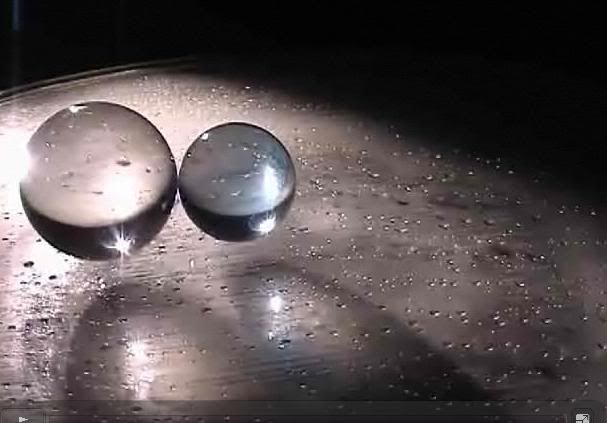
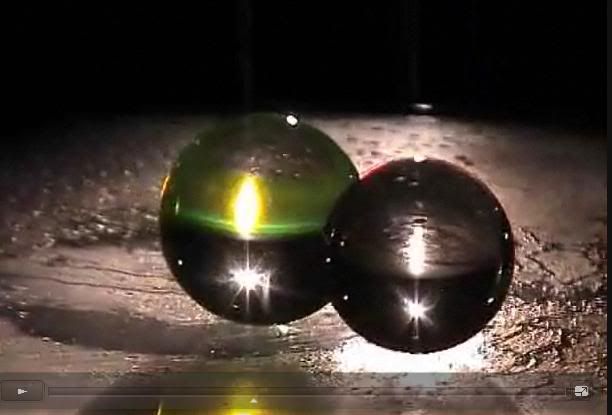
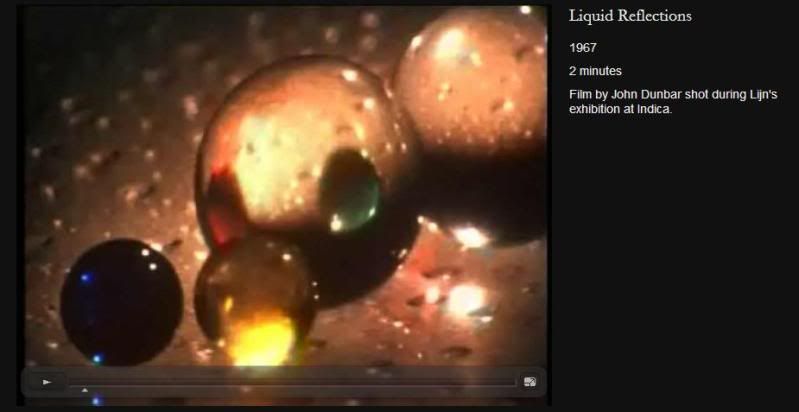
Liquid Reflections, Liliane Lijn
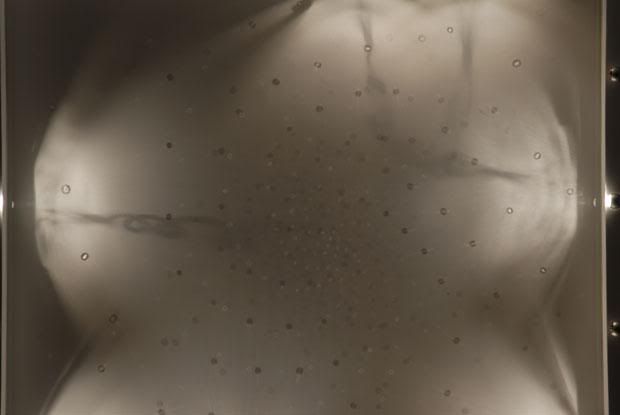
Cosmic Flares, Liliane Lijn
48” x 47” x 6”
Polymer lenses on Perspex in painted wood frame, lights and motorised switching mechanism.
I began to fabricate framed wall sculptures using thin acrylic sheets as surfaces and incorporating within the frame numerous small spotlights that were programmed to turn on and off sequentially to change the angle of incident light illuminating the surface.
I would like to make cosmic maps. It should be that in the discipline of a drawing there is the same rhythm as that of cosmic forces.
A lens is a point, which could be a photon, an electron, an atom. I wanted to get to the bottom of what a point really was. It appeared to me that as a point might be considered circular, I could make a circle of points which could expand into concentric circles. But, the space in between the succeeding points became greater and greater so that point lines radiated from the central circle. Because of this I realised that each point is connected to its nearest neighbours by some kind of force. A point is in reality a particle of matter and contains the same positive and negative forces as all other matter.
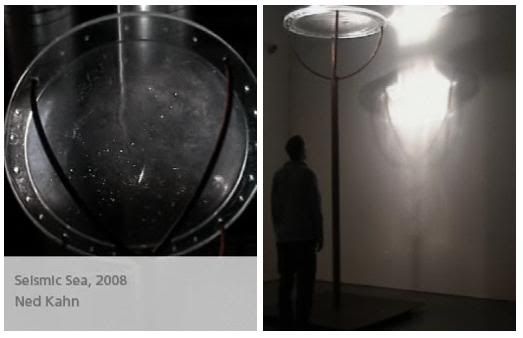
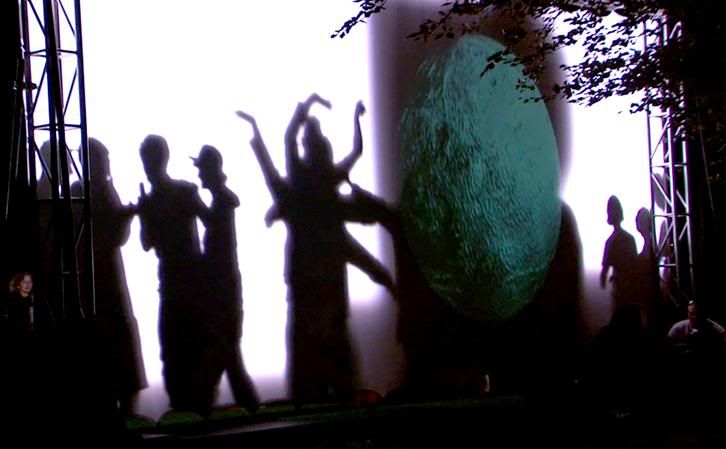
Seeing the unseen, Dan Goods
There are many things that exist right in front of us, yet we do not have the right technologies or mindset to see them. From scientific breakthroughs to successful organizational outcomes, they can all be obscured by something else until someone finds the key to truly see. For scientists at NASA's Jet Propulsion Laboratory, they are looking to discover earth like planets around other stars. This is extremely difficult because stars are billions of times bigger and brighter than the planets they are looking for. Yet they believe they are right there. Already hundreds of planets have been found, but current technology limits us to finding only the largest of planets. In the coming decades JPL will invent the tools to find them. This installation investigates this concept of seeing what is unseen.
To communicate these ideas I project a movie onto a large wall/surface. At the same time I project a brighter pixelated movie that is reminicent of the sun. This projected light is so bright it washes out the movie from the other projector. The “sunlike” projector is about waist height so that as soon as you walk in front of the light, the persons shadow hits the screen and reveals the video inside their shadow. The more people inside, the more of the video they can see.


An interactive Sound Sculpture, Dan Goods
Myself and four other artists were commissioned to create a new work related to infrared astronomy for the Observe Exhibition at Art Center College of Design. Thank you to Gilad Lotan who did all the technical integration for this project.
When you walk into the space you first see a large clock, and at the same time, hear a bunch of voices. As you enter the space you realize that each of the hours of the clock are different sizes and different distances away. At some point the viewer notices a glowing light that says "talk to me" on it. When the person bends over to talk to it, a microphone senses the movement and records for five seconds. Their voice is recorded, but not played back for a few seconds. The viewer is at first confused, since nothing happens immediately, but after a few seconds thier voice comes out of one of the speakers. After a few more seconds, what they said comes out another speaker. It then comes out in a few minutes, hours, days and even months later. So the room is filled with sounds from different time periods. Some of the sounds are even stretched much like light distorts the older it is.
This work was inpired by the fact that when we look at the stars, we do not see them as they are at this moment, but as they were in the past. Stars are vastly different distances away, and therefore different times away. The light from the closest stars can take four years to get here, while other stars can take millions and even billions of years to reach us. So we really see a sky that is a patchwork of history.
When I saw this I got really excited, as someone else has used the 'cosmic spheres of time' idea before. I hope this will be a big influence in my work.
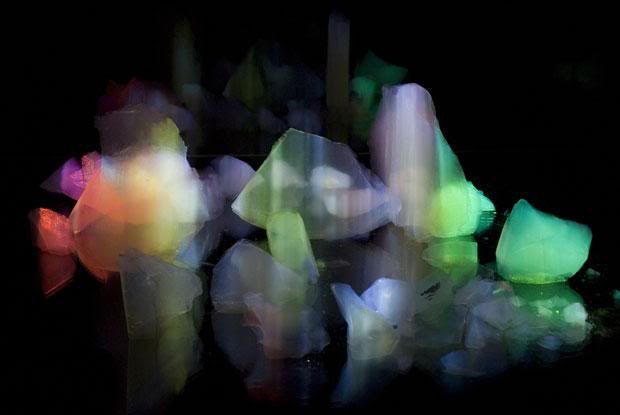
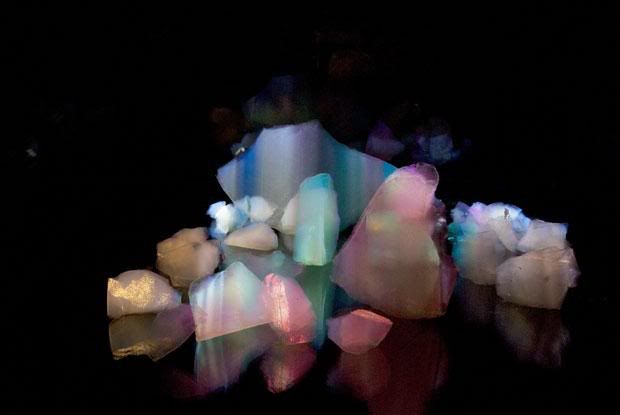
48” x 47” x 6”
Polymer lenses on Perspex in painted wood frame, lights and motorised switching mechanism.
I began to fabricate framed wall sculptures using thin acrylic sheets as surfaces and incorporating within the frame numerous small spotlights that were programmed to turn on and off sequentially to change the angle of incident light illuminating the surface.
I would like to make cosmic maps. It should be that in the discipline of a drawing there is the same rhythm as that of cosmic forces.
A lens is a point, which could be a photon, an electron, an atom. I wanted to get to the bottom of what a point really was. It appeared to me that as a point might be considered circular, I could make a circle of points which could expand into concentric circles. But, the space in between the succeeding points became greater and greater so that point lines radiated from the central circle. Because of this I realised that each point is connected to its nearest neighbours by some kind of force. A point is in reality a particle of matter and contains the same positive and negative forces as all other matter.


There are many things that exist right in front of us, yet we do not have the right technologies or mindset to see them. From scientific breakthroughs to successful organizational outcomes, they can all be obscured by something else until someone finds the key to truly see. For scientists at NASA's Jet Propulsion Laboratory, they are looking to discover earth like planets around other stars. This is extremely difficult because stars are billions of times bigger and brighter than the planets they are looking for. Yet they believe they are right there. Already hundreds of planets have been found, but current technology limits us to finding only the largest of planets. In the coming decades JPL will invent the tools to find them. This installation investigates this concept of seeing what is unseen.
To communicate these ideas I project a movie onto a large wall/surface. At the same time I project a brighter pixelated movie that is reminicent of the sun. This projected light is so bright it washes out the movie from the other projector. The “sunlike” projector is about waist height so that as soon as you walk in front of the light, the persons shadow hits the screen and reveals the video inside their shadow. The more people inside, the more of the video they can see.


Myself and four other artists were commissioned to create a new work related to infrared astronomy for the Observe Exhibition at Art Center College of Design. Thank you to Gilad Lotan who did all the technical integration for this project.
When you walk into the space you first see a large clock, and at the same time, hear a bunch of voices. As you enter the space you realize that each of the hours of the clock are different sizes and different distances away. At some point the viewer notices a glowing light that says "talk to me" on it. When the person bends over to talk to it, a microphone senses the movement and records for five seconds. Their voice is recorded, but not played back for a few seconds. The viewer is at first confused, since nothing happens immediately, but after a few seconds thier voice comes out of one of the speakers. After a few more seconds, what they said comes out another speaker. It then comes out in a few minutes, hours, days and even months later. So the room is filled with sounds from different time periods. Some of the sounds are even stretched much like light distorts the older it is.
This work was inpired by the fact that when we look at the stars, we do not see them as they are at this moment, but as they were in the past. Stars are vastly different distances away, and therefore different times away. The light from the closest stars can take four years to get here, while other stars can take millions and even billions of years to reach us. So we really see a sky that is a patchwork of history.
When I saw this I got really excited, as someone else has used the 'cosmic spheres of time' idea before. I hope this will be a big influence in my work.
One of the new discoveries I made from this research was Aerogel. It is what NASA use to collect space dust, and it is made of 99.98% air. Here is Lilian Lijn's work that uses aerogel, and its amazing what happens when you shine light throught it.


Heavenly Fragments, 2008
295 x 65 x 65 cm
Aerogel Fragments of cone and disc on grey mirror in Perspex case, perlescent metallic coated square column housing dvd player, projector
Video: Visions of the East, 50’ looped dvd
A disc and a cone of aerogel have broken into fragments. Each installation is an attempt at renewal but can only represent a fragmented memory, a ruin. The video projected onto this installation, Visions of the East, is a compilation of images -memories from my travels in Southern India in 2003.
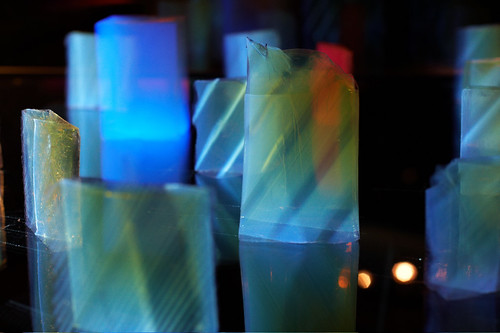
Solid Smoke, Dan Goods
295 x 65 x 65 cm
Aerogel Fragments of cone and disc on grey mirror in Perspex case, perlescent metallic coated square column housing dvd player, projector
Video: Visions of the East, 50’ looped dvd
A disc and a cone of aerogel have broken into fragments. Each installation is an attempt at renewal but can only represent a fragmented memory, a ruin. The video projected onto this installation, Visions of the East, is a compilation of images -memories from my travels in Southern India in 2003.

Solid Smoke, Dan Goods
I'm guessing its not something I will be able to get hold of easily..
Ideas
I think I am leaning towards using the 'spheres of time' idea, especially having found a way that it has been used in installation. When I saw the aerogel work I wondered if there was a way that I could make something similar with materials to hand.
The idea I have at the moment is to layer lots of circles of acetate to make spheres. I could paint each layer with ink, and possibly fade to different colours in different areas of the spehere. I have bought the acetate and located a compass so I'll be trying that out this week.
I also have an old fashioned fishing buouy made of glass which is very similar to something from Lijn's work, which I will be experimenting with alongside the OHP and with photography.
Science is Vital
On Saturday I went to the Science is Vital rally outside the HM treasury in Westminster. I heard about it from the various scientists that I follow on twitter, here is a link to the website
I do urge anyone reading this in time to sign the petition as there are already over 20,000 signatures despite it only being started 2 weeks ago! The rally was great, I haven't been to a protest before and I really enjoyed the atmosphere and the feeling of being a part of something. I was a little disappointed with the placards, they had all been printed straight from the site - but a few had been painted and were a little more unusual, like the ones from the Oxford astronomers. The talks were really inspiring and persuaded me even more, as though I needed it!

Galaxy Zoo
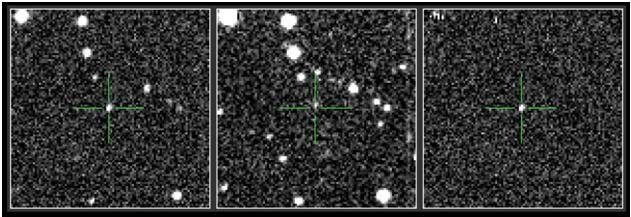
I found a brilliant website the other day where you classify images from space to help the people mapping the skies. I signed up and had a go at classifying potential supernovae and different types of galaxy. You can also track your own work and see what happens to the images you think are a bit fishy.
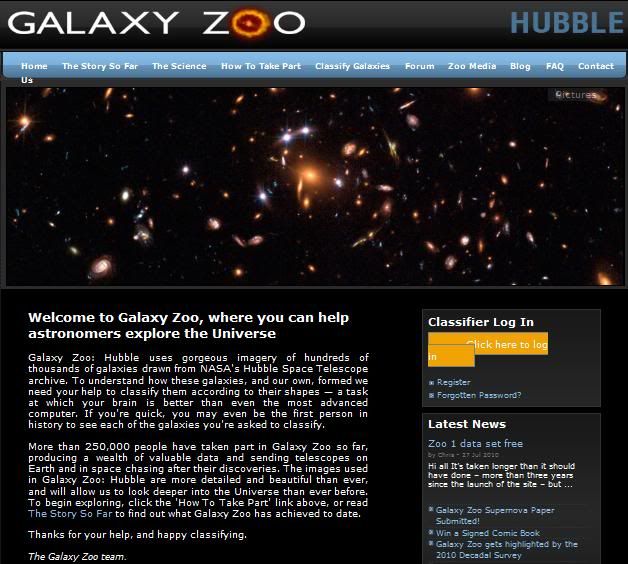
I think I am leaning towards using the 'spheres of time' idea, especially having found a way that it has been used in installation. When I saw the aerogel work I wondered if there was a way that I could make something similar with materials to hand.
The idea I have at the moment is to layer lots of circles of acetate to make spheres. I could paint each layer with ink, and possibly fade to different colours in different areas of the spehere. I have bought the acetate and located a compass so I'll be trying that out this week.
I also have an old fashioned fishing buouy made of glass which is very similar to something from Lijn's work, which I will be experimenting with alongside the OHP and with photography.
Science is Vital
On Saturday I went to the Science is Vital rally outside the HM treasury in Westminster. I heard about it from the various scientists that I follow on twitter, here is a link to the website
I do urge anyone reading this in time to sign the petition as there are already over 20,000 signatures despite it only being started 2 weeks ago! The rally was great, I haven't been to a protest before and I really enjoyed the atmosphere and the feeling of being a part of something. I was a little disappointed with the placards, they had all been printed straight from the site - but a few had been painted and were a little more unusual, like the ones from the Oxford astronomers. The talks were really inspiring and persuaded me even more, as though I needed it!

Galaxy Zoo


Off now as Holly needs to trace pupating Monarch Butterflies from my screen! More soon!
No comments:
Post a Comment